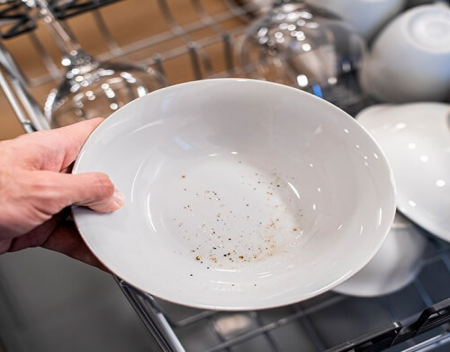Tipos de aparatos
- Aire acondicionado
- Automobile
- Chainsaw
- Circular Saw
- Lavaplatos
- Drills
- Secadora
- Drywall Screw Gun
- Horno
- Gas Fireplace
- Gas Grill
- Gas Patio Heater
- Grinder
- Heat Pump
- Impact Driver
- Impact Wrench
- Microonda
- Nailer
- Orbital Sander
- Calentadores de piscina
- Powerwall
- Distancia
- Refrigerador
- Television
- Lavadora
- Calentador de agua
Marcas de electrodomésticos
- A.O. Smith
- AccuCold
- Admiral Craft
- AGA
- Airrex
- Amana
- Ambiance
- American Range
- American Standard
- American Water Heaters
- Aquacal
- Armstrong
- Asko
- Avanti
- Avenlur
- Azure
- Beko
- Bellfires
- Bertazzoni
- Blackstone
- Blaze
- Blomberg
- BlueStar
- Bosch
- Bradford White
- Bromic
- Bryant
- Cafe
- Calcana
- Capital
- Carrier
- Char-Broil
- Char-Griller
- Chrysler
- Coates
- Coleman
- Comfortmaker
- Commercial Chef
- Continental
- Cosmo
- Cove
- Crown Verity
- Dacor
- Daikin
- Danby
- Danfoss
- DaVinci
- DCS
- Deco
- DeWALT
- Ducane
- Dyna-Glo
- Dyson
- EcoSmart
- Electrolux
- Element4
- Empava
- Equator
- Eurodib
- European Home
- Everdure
- Farberware
- Fhiaba
- FibroPool
- Fire Sense
- Fisher
- FiveStar
- Flare
- Flash Furniture
- Focus
- Ford
- Forno
- Forte
- Frigidaire
- Fulgor Milano
- Gaggenau
- GE
- General Motors
- GlowBrand
- Goodman
- Grundig
- GSW
- Haier
- Hayward
- Heatstar
- Heil
- Hestan
- Hisense
- Hitachi
- Hotpoint
- iio
- Ilve
- Impecca
- Ingignia
- Insignia
- JennAir
- John Wood
- Keeprite
- Kenmore
- Kenyon
- KitchenAid
- Kucht
- La Cornue
- Lennox
- LG
- Liebherr
- Lifetime
- Lion
- Luxaire
- Lynx
- Magic Chef
- Marvel
- Maytag
- McQuay
- MicroFridge
- Midea
- Miele
- Migali
- Monogram
- Montigo
- Mr Heater
- Napoleon
- Navien
- Nexgrill
- Noritz
- Panasonic
- Patio Comforts
- Payne
- Pentair
- Perlick
- PITT
- Premier
- Raypak
- Real Fyre
- Regency
- Reliance
- Rheem
- Rinnai
- Roma
- Ruud
- Saber
- Samsung
- Schwank
- Sharp
- Smeg
- Solas
- Sony
- Spartherm
- Speed Queen
- StaRite
- State Water Heaters
- Stiebel Eltron
- SubZero
- Summerset
- Summit
- SunGlo
- SunPak
- Sunpentown
- SunStar
- Superiore
- Takagi
- TCL
- TEC
- Tempstar
- Tesla
- Thermador
- Thor Kitchen
- Toshiba
- Town and Country
- Toyota
- Traeger
- Trane
- Twin Eagles
- U-Line
- Unique
- Vaillant Group
- Valor
- Verona
- Victory
- Viessmann
- Viking
- Vizio
- Weber
- Westinghouse
- Whirlpool
- Whynter
- York
- ZLINE
Categorías de artículos
- Aire Acondicionado
- Cuidado de los electrodomesticos
- Appliance News
- Dishwasher News
- Maquinas de secado
- Hornos
- Gas Fireplaces
- Microondas
- Calentadores de piscina
- Frigorificos
- Estufas - Cocinas
- Trucos y consejos
- Lavadoras
- Water Heaters
Más artículos
My Dishwasher is Not Cleaning Dishes

Is your dishwasher not cleaning well lately? That can be a serious problem if you’re a busy person. There are several possible causes for an ineffective dishwasher, including a dirty filter, clogged spray arm, or broken soap dispenser.
If you’ve noticed that your dishwasher’s not getting dishes clean, it’s time to investigate using the guidelines below.
Dirty Interior.
Things accumulate on the inside of your dishwasher: grease, tiny food bits, mineral deposits from hard water, soap scum, etc. Cleaning the interior of your dishwasher is a good first step when the dishwasher’s not cleaning dishes. If buildup is minor, try running a vinegar cycle: Pour 3 cups of white vinegar in the bottom, and run through a full cycle.
Dirty Filter.
Older dishwashers (those made before 2010) most likely have a self-cleaning filter that operates by grinding down food particles until they are small enough to wash away. Newer, quieter models typically have a removable filter that needs to be taken out and cleaned periodically. The filter is below the racks, usually topped with a twist-off cap. To clean the filter, remove it from the machine (using owner’s manual instructions) and rinse it thoroughly under hot water. If there’s stuck-on gunk, soak it in hot, soapy water for several minutes and gently clean it with a soft brush before rinsing.
Clogged Spray Arm.
Spray arms spin around below and/or above the dishwasher racks, shooting water to wash the dishes. The jets (tiny holes) in spray arms can get clogged, which reduces water pressure. Cleaning the spray arms may improve function. Depending on your model, the arm may snap off easily for cleaning, or you might need to remove a screw to take it out. Scrub it with a soft brush and dish soap, use a toothpick to dislodge clogs in the holes, and then rinse it well under hot water.
Broken Soap Dispenser.
If your soap dispenser isn’t working properly, detergent may not be reaching your dishes, or it may not be released at the right time during the wash cycle. A common issue is a jammed spring in the dispenser door. Try using a small brush to clean the soap dispenser and springs. A mixture of hot water and vinegar will help dissolve grease and debris. If the spring or the dispenser door is broken, it needs to be replaced. Finally, check the gasket around the dispenser, and replace it if it’s cracked. Rubbing a small dab of petroleum jelly around the gasket occasionally may extend its life.
Low Water Temperature.
Most dishwasher cycles require a water temperature of at least 120 degrees Fahrenheit to work properly. Some models have a heart-boosting mechanism built in, but if yours doesn’t, make sure that your water heater is set to 120 degrees. (Be careful! Setting the temperature any higher than 120 degrees creates a risk of scalding.) Finally, you can run the kitchen faucet for 30 to 60 seconds before starting the dishwasher to ensure that hot water enters the machine at the start.
Detergent and Related Issues.
Low-quality or improper detergent can lead to spotty dishes. Using too much detergent can also cause problems. Be sure to use the right type of detergent and the appropriate amount. A final rinse agent should improve results too. If you have hard water, consider installing a water softener to minimize mineral deposit damage. Lastly, be sure to load the dishwasher correctly.
Water Volume or Pressure Issues.
Water pressure problems are likely to affect appliances like dishwashers and washing machines. If you’ve noticed that water pressure in your faucets has been lower than normal, or if the pressure seems to be fluctuating, you may need professional help to address the issue.
SOURCE: mrappliance.com

Is your dishwasher not cleaning well lately? That can be a serious problem if you’re a busy person. There are several possible causes for an ineffective dishwasher, including a dirty filter, clogged spray arm, or broken soap dispenser.
If you’ve noticed that your dishwasher’s not getting dishes clean, it’s time to investigate using the guidelines below.
Dirty Interior.
Things accumulate on the inside of your dishwasher: grease, tiny food bits, mineral deposits from hard water, soap scum, etc. Cleaning the interior of your dishwasher is a good first step when the dishwasher’s not cleaning dishes. If buildup is minor, try running a vinegar cycle: Pour 3 cups of white vinegar in the bottom, and run through a full cycle.
Dirty Filter.
Older dishwashers (those made before 2010) most likely have a self-cleaning filter that operates by grinding down food particles until they are small enough to wash away. Newer, quieter models typically have a removable filter that needs to be taken out and cleaned periodically. The filter is below the racks, usually topped with a twist-off cap. To clean the filter, remove it from the machine (using owner’s manual instructions) and rinse it thoroughly under hot water. If there’s stuck-on gunk, soak it in hot, soapy water for several minutes and gently clean it with a soft brush before rinsing.
Clogged Spray Arm.
Spray arms spin around below and/or above the dishwasher racks, shooting water to wash the dishes. The jets (tiny holes) in spray arms can get clogged, which reduces water pressure. Cleaning the spray arms may improve function. Depending on your model, the arm may snap off easily for cleaning, or you might need to remove a screw to take it out. Scrub it with a soft brush and dish soap, use a toothpick to dislodge clogs in the holes, and then rinse it well under hot water.
Broken Soap Dispenser.
If your soap dispenser isn’t working properly, detergent may not be reaching your dishes, or it may not be released at the right time during the wash cycle. A common issue is a jammed spring in the dispenser door. Try using a small brush to clean the soap dispenser and springs. A mixture of hot water and vinegar will help dissolve grease and debris. If the spring or the dispenser door is broken, it needs to be replaced. Finally, check the gasket around the dispenser, and replace it if it’s cracked. Rubbing a small dab of petroleum jelly around the gasket occasionally may extend its life.
Low Water Temperature.
Most dishwasher cycles require a water temperature of at least 120 degrees Fahrenheit to work properly. Some models have a heart-boosting mechanism built in, but if yours doesn’t, make sure that your water heater is set to 120 degrees. (Be careful! Setting the temperature any higher than 120 degrees creates a risk of scalding.) Finally, you can run the kitchen faucet for 30 to 60 seconds before starting the dishwasher to ensure that hot water enters the machine at the start.
Detergent and Related Issues.
Low-quality or improper detergent can lead to spotty dishes. Using too much detergent can also cause problems. Be sure to use the right type of detergent and the appropriate amount. A final rinse agent should improve results too. If you have hard water, consider installing a water softener to minimize mineral deposit damage. Lastly, be sure to load the dishwasher correctly.
Water Volume or Pressure Issues.
Water pressure problems are likely to affect appliances like dishwashers and washing machines. If you’ve noticed that water pressure in your faucets has been lower than normal, or if the pressure seems to be fluctuating, you may need professional help to address the issue.
SOURCE: mrappliance.com




